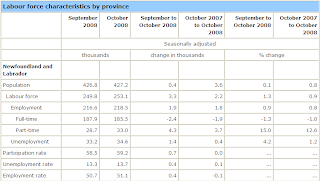However, another possible scenario is that the path we were on, at least in terms of prices, was a side-track fuelled by G8 easy money policies and low interest coupled with an over-reliance on self-regulating private financial markets.
No where could the effects of self-interest and myopic thinking fuelled by a belief in increasing real wealth be better seen than in our own housing markets. Looking at the graph below and talking to those "in-the-know" such as real estate agents and builders what would you expect. Naturally, that the future will be the recent past and that prices will keep rising. We have a way our rationalizing that precludes what has come ashore elsewhere will happen here. And yet....
Under this second scenario the current fall in stock prices is right on track with the longer term trends and one should not expect the stock market to follow the post-90's growth path built on easy finance but it should follow this longer term trend.
If this second scenario is correct then pensioners in particular and the funds that guarantee them have a hard road ahead. Real resources will have to be used to finance their income. Once again "boomers" and "zoomers" (pre-boomers) have managed in some sense to shift the burden back to future generations!


